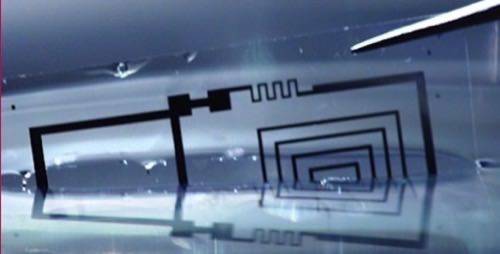
To the list of objects that might occupy the coming Internet of Things, add the internal injury you suffered learning to kickbox.
A government-funded research project has come up with dissolvable electronics capable of such tasks as monitoring a bruised kidney, sharing information and fending off infection.
Researchers at Tufts University and the University of Illinois said they have made small, complete computing devices – including energy sources – that melt at prescribed rates in water. They look and bend a little like novelty transparent business cards with the familiar right-angle circuit etchings of semiconductors.
It’s called transient electronics, and potential uses go beyond medicine to include environmental protection and national defense. In fact, the project was funded in part by the Defense Advanced Research Projects Agency and the U.S. Air Force, as well as by the National Science Foundation.
The clear material is specially prepared silk and the circuits, which are only tens of nanometers thick, are made of silicon and magnesium.
The silk gives the circuits a foundation, but also delays dissolution, depending on how thick the material is. (The thicker the clear silk layer, the longer it takes to dissolve.) The circuits themselves dissolve as well, leaving nothing behind once the process is finished, according to Fiorenzo Omenetto, professor of biomedical engineering at Tufts School of Engineering and a senior and corresponding author of the team’s paper.
The devices can be crafted to last up to years. Downstream applications might include compostable consumer electronics and geophysical monitors.
Photo courtesy of the Beckman Institute, University of Illinois and Tufts University

















